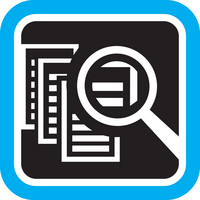 Modern-day banking is far more convenient than it was just a decade or two ago. We can manage our accounts, pay our bills and get account information without ever having to leave our computers. Most banks have also released outstanding mobile applications so that we are no longer tied to our computers to access our online banking and credit card accounts.
Modern-day banking is far more convenient than it was just a decade or two ago. We can manage our accounts, pay our bills and get account information without ever having to leave our computers. Most banks have also released outstanding mobile applications so that we are no longer tied to our computers to access our online banking and credit card accounts.
But this convenience is based on having secure passwords to access our accounts. When we login, this password is the only thing that the bank uses to verify who we are. It’s therefore absolutely essential to our financial security that we protect our banking passwords, and take advantage of many of the other security features offered by the banks.
Here’s some advice on how to protect and select passwords for online accounts.
Use Unique and Lengthy Passwords. In general, the longer your password is the harder it will be for someone to guess. If your bank or financial institution limits the length of your password, try to make full use of that maximum length. One technique that balances a lengthy password with making it easier to remember is to simply stringing together a few words into a phrase or sentence. For example, a passwords such as “myfamilytravels” or “ireallylikesundaes” are going to be very difficult to guess, and are not likely to be in any of the password “dictionaries” used by some hackers.
Use Stronger Passwords. Another way to strengthen your passwords is to substitute numbers “special characters” (such as “!”, “@”, or “#”) for certain letters in your otherwise standard password, or to add them in between the letters of that password. For example, if you would otherwise use the word “flowerpot” for your password, change it to something like “fl@w#rp0t”. The latter password is much more secure than the standard word. If your bank requires you to use numbers and/or special characters then avoid the temptation to simply stick this character at the beginning or end of your standard password. Instead, make sure the special characters are used throughout the password, with as many of them as possible.
Use a Password Manager. While every website will advise you to select a unique username and password combination, it’s often difficult to keep them all straight. Fortunately, there are tools available to help you keep track of all your secure information. These programs and browser plug-ins are known as “password managers,” and there are many secure options to choose from.
Take Advantage of Multi-factor Login Options. Several banks are now offering the option of an additional level of security. The most common method is for the bank to send a short code to your cell phone by SMS text message whenever you log in to your account, and you’ll have to enter this code as well as your username and password.
Only Use Secure Internet Connections. If you ever use a public Internet access point, such as a coffee shop or airport, avoid logging into your bank account. You never know who may be using advanced wireless devices to “listen in” to this information over unsecured connections.
Your online banking are credit card passwords and accounts can be highly secure, but you need to do your part to keep them secure.
 Modern-day banking is far more convenient than it was just a decade or two ago. We can manage our accounts, pay our bills and get account information without ever having to leave our computers. Most banks have also released outstanding mobile applications so that we are no longer tied to our computers to access our online banking and credit card accounts.
Modern-day banking is far more convenient than it was just a decade or two ago. We can manage our accounts, pay our bills and get account information without ever having to leave our computers. Most banks have also released outstanding mobile applications so that we are no longer tied to our computers to access our online banking and credit card accounts.

